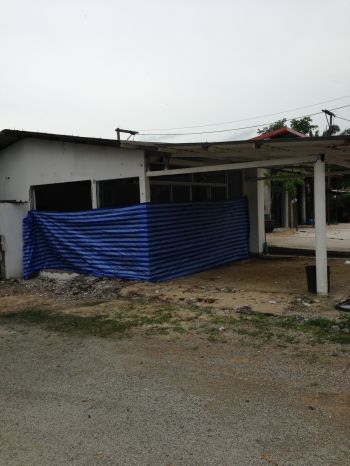การวิเคราะห์ความคุ้มค่าในการลงทุนเปิดร้านกาแฟ: กรณีศึกษา NPV และ IRR
Investment Feasibility Analysis for Opening a Coffee Shop: A Case Study of NPV and IRR
บทนำ: ทำไมต้องวิเคราะห์ NPV และ IRR ก่อนเปิดร้านกาแฟ
การตัดสินใจลงทุนในธุรกิจใดๆ ก็ตาม โดยเฉพาะอย่างยิ่งธุรกิจร้านกาแฟที่มีการแข่งขันสูง จำเป็นต้องมีการวิเคราะห์ความเป็นไปได้และความคุ้มค่าอย่างรอบคอบ นอกเหนือจากการพิจารณาปัจจัยด้านการตลาด การดำเนินงาน และการบริหารจัดการแล้ว การวิเคราะห์ทางการเงินถือเป็นหัวใจสำคัญที่จะช่วยให้ผู้ประกอบการสามารถประเมินศักยภาพในการทำกำไรและตัดสินใจลงทุนได้อย่างมีประสิทธิภาพ เครื่องมือทางการเงินที่สำคัญสองอย่างที่มักถูกนำมาใช้ในการวิเคราะห์โครงการลงทุนคือ มูลค่าปัจจุบันสุทธิ (Net Present Value: NPV) และอัตราผลตอบแทนภายใน (Internal Rate of Return: IRR) ในบทความนี้ เราจะเจาะลึกการคำนวณ NPV และ IRR โดยใช้กรณีศึกษาการเปิดร้านกาแฟด้วยเงินลงทุน 2,000,000 บาท และคาดการณ์กำไรปีละ 600,000 บาท เป็นระยะเวลา 5 ปี เพื่อตอบคำถามสำคัญที่ว่า "การลงทุนนี้คุ้มค่าหรือไม่"
Introduction: Why Analyze NPV and IRR Before Opening a Coffee Shop?
The decision to invest in any business, especially in the highly competitive coffee shop industry, requires a thorough analysis of feasibility and profitability. Beyond considering marketing, operational, and management factors, financial analysis is crucial. It helps entrepreneurs assess the potential for profit and make informed investment decisions. Two key financial tools often used in project investment analysis are Net Present Value (NPV) and Internal Rate of Return (IRR). In this article, we will delve into the calculation of NPV and IRR using a case study of opening a coffee shop with an investment of 2,000,000 baht and a projected annual profit of 600,000 baht for 5 years to answer the crucial question: "Is this investment worthwhile?"
ทำความเข้าใจมูลค่าปัจจุบันสุทธิ (NPV)
มูลค่าปัจจุบันสุทธิ (NPV) คือ ผลต่างระหว่างมูลค่าปัจจุบันของกระแสเงินสดรับ (Cash Inflows) และมูลค่าปัจจุบันของกระแสเงินสดจ่าย (Cash Outflows) ตลอดอายุโครงการลงทุน NPV เป็นตัวชี้วัดที่บอกว่าโครงการลงทุนนั้นๆ จะสร้างมูลค่าเพิ่มให้กับผู้ลงทุนหรือไม่ หลักการง่ายๆ คือ
หาก NPV เป็นบวก (+) หมายความว่า โครงการลงทุนนั้นคุ้มค่าที่จะลงทุน เนื่องจากกระแสเงินสดรับมีมูลค่ามากกว่ากระแสเงินสดจ่ายหาก NPV เป็นลบ (-) หมายความว่า โครงการลงทุนนั้นไม่คุ้มค่าที่จะลงทุน เนื่องจากกระแสเงินสดจ่ายมีมูลค่ามากกว่ากระแสเงินสดรับ
หาก NPV เป็นศูนย์ (0) หมายความว่า โครงการลงทุนนั้นให้ผลตอบแทนเท่ากับต้นทุนพอดี
สูตรการคำนวณ NPV:
NPV = ∑ (Cash Flowt / (1 + r)t) - Initial Investment
โดยที่:- Cash Flowt คือ กระแสเงินสดสุทธิ (Net Cash Flow) ในแต่ละช่วงเวลา t
- r คือ อัตราคิดลด (Discount Rate) หรืออัตราผลตอบแทนขั้นต่ำที่ต้องการ
- t คือ ช่วงเวลา (ปี)
- Initial Investment คือ เงินลงทุนเริ่มต้น
ตัวอย่างการคำนวณ NPV สำหรับร้านกาแฟ:
สมมติว่าอัตราคิดลด (r) เท่ากับ 10% ต่อปี
- ปีที่ 0: -2,000,000 บาท (เงินลงทุนเริ่มต้น)
- ปีที่ 1: 600,000 / (1 + 0.10)1 = 545,454.55 บาท
- ปีที่ 2: 600,000 / (1 + 0.10)2 = 495,867.77 บาท
- ปีที่ 3: 600,000 / (1 + 0.10)3 = 450,788.88 บาท
- ปีที่ 4: 600,000 / (1 + 0.10)4 = 409,808.07 บาท
- ปีที่ 5: 600,000 / (1 + 0.10)5 = 372,552.79 บาท
NPV = -2,000,000 + 545,454.55 + 495,867.77 + 450,788.88 + 409,808.07 + 372,552.79 = 274,472.06 บาท
จากตัวอย่าง จะเห็นว่า NPV มีค่าเป็นบวก (274,472.06 บาท) ซึ่งหมายความว่าการลงทุนเปิดร้านกาแฟนี้คุ้มค่า
Understanding Net Present Value (NPV)
Net Present Value (NPV) is the difference between the present value of cash inflows and the present value of cash outflows over the life of an investment project. NPV is an indicator of whether an investment project will create value for investors. The simple principle is:
If NPV is positive (+), it means that the investment project is worthwhile because the cash inflows are greater than the cash outflows.If NPV is negative (-), it means that the investment project is not worthwhile because the cash outflows are greater than the cash inflows.
If NPV is zero (0), it means that the investment project yields a return equal to the cost.
NPV Calculation Formula:
NPV = ∑ (Cash Flowt / (1 + r)t) - Initial Investment
Where:- Cash Flowt is the net cash flow in each period t
- r is the discount rate or the minimum required rate of return
- t is the period (year)
- Initial Investment is the initial investment
Example of NPV Calculation for a Coffee Shop:
Assume the discount rate (r) is 10% per year.
- Year 0: -2,000,000 Baht (Initial Investment)
- Year 1: 600,000 / (1 + 0.10)1 = 545,454.55 Baht
- Year 2: 600,000 / (1 + 0.10)2 = 495,867.77 Baht
- Year 3: 600,000 / (1 + 0.10)3 = 450,788.88 Baht
- Year 4: 600,000 / (1 + 0.10)4 = 409,808.07 Baht
- Year 5: 600,000 / (1 + 0.10)5 = 372,552.79 Baht
NPV = -2,000,000 + 545,454.55 + 495,867.77 + 450,788.88 + 409,808.07 + 372,552.79 = 274,472.06 Baht
From the example, it can be seen that the NPV is positive (274,472.06 Baht), which means that investing in opening this coffee shop is worthwhile.
ทำความเข้าใจอัตราผลตอบแทนภายใน (IRR)
อัตราผลตอบแทนภายใน (IRR) คือ อัตราคิดลด (Discount Rate) ที่ทำให้มูลค่าปัจจุบันสุทธิ (NPV) ของโครงการลงทุนมีค่าเท่ากับศูนย์ (0) กล่าวอีกนัยหนึ่ง IRR คือ อัตราผลตอบแทนที่โครงการลงทุนนั้นๆ สามารถสร้างได้
หาก IRR สูงกว่า อัตราผลตอบแทนขั้นต่ำที่ต้องการ (Minimum Acceptable Rate of Return: MARR) หรือต้นทุนของเงินทุน (Cost of Capital) แสดงว่าโครงการลงทุนนั้นคุ้มค่าที่จะลงทุนหาก IRR ต่ำกว่า อัตราผลตอบแทนขั้นต่ำที่ต้องการ หรือต้นทุนของเงินทุน แสดงว่าโครงการลงทุนนั้นไม่คุ้มค่าที่จะลงทุน
หาก IRR เท่ากับ อัตราผลตอบแทนขั้นต่ำที่ต้องการ หรือต้นทุนของเงินทุน แสดงว่าโครงการลงทุนนั้นให้ผลตอบแทนเท่ากับต้นทุนพอดี
การคำนวณ IRR โดยทั่วไปจะใช้โปรแกรม Excel หรือเครื่องคิดเลขทางการเงิน เนื่องจากเป็นการคำนวณที่ซับซ้อนและต้องใช้การลองผิดลองถูก (Trial and Error) เพื่อหาอัตราคิดลดที่ทำให้ NPV = 0
ตัวอย่างการคำนวณ IRR สำหรับร้านกาแฟ (โดยใช้ Excel):
ใช้ฟังก์ชัน IRR ใน Excel โดยใส่ค่ากระแสเงินสดสุทธิในแต่ละปี (รวมเงินลงทุนเริ่มต้น) จะได้ค่า IRR ประมาณ 15.24%
เนื่องจาก IRR (15.24%) สูงกว่าอัตราคิดลดที่กำหนดไว้ (10%) จึงสรุปได้ว่าการลงทุนเปิดร้านกาแฟนี้คุ้มค่า
Understanding Internal Rate of Return (IRR)
The Internal Rate of Return (IRR) is the discount rate that makes the Net Present Value (NPV) of an investment project equal to zero (0). In other words, IRR is the rate of return that the investment project can generate.
If the IRR is higher than the Minimum Acceptable Rate of Return (MARR) or the Cost of Capital, it indicates that the investment project is worthwhile.If the IRR is lower than the Minimum Acceptable Rate of Return or the Cost of Capital, it indicates that the investment project is not worthwhile.
If the IRR is equal to the Minimum Acceptable Rate of Return or the Cost of Capital, it indicates that the investment project yields a return equal to the cost.
Calculating the IRR generally requires using Excel or a financial calculator because it is a complex calculation that requires trial and error to find the discount rate that makes NPV = 0.
Example of IRR Calculation for a Coffee Shop (using Excel):
Use the IRR function in Excel by entering the net cash flow values for each year (including the initial investment). You will get an IRR of approximately 15.24%.
Since the IRR (15.24%) is higher than the specified discount rate (10%), it can be concluded that investing in opening this coffee shop is worthwhile.
เปรียบเทียบ NPV และ IRR: ข้อดีและข้อจำกัด
ทั้ง NPV และ IRR เป็นเครื่องมือที่มีประโยชน์ในการวิเคราะห์โครงการลงทุน แต่ก็มีข้อดีและข้อจำกัดที่แตกต่างกัน
NPV:
ข้อดี:- เข้าใจง่ายและคำนวณได้ตรงไปตรงมา
- พิจารณามูลค่าของเงินตามเวลา (Time Value of Money)
- ให้ผลลัพธ์เป็นตัวเงิน ทำให้ง่ายต่อการเปรียบเทียบโครงการต่างๆ
- ต้องกำหนดอัตราคิดลดที่เหมาะสม ซึ่งอาจเป็นเรื่องยาก
- ไม่สามารถเปรียบเทียบโครงการที่มีขนาดการลงทุนแตกต่างกันมากได้โดยตรง
IRR:
ข้อดี:- ไม่ต้องกำหนดอัตราคิดลดล่วงหน้า
- ให้ผลลัพธ์เป็นเปอร์เซ็นต์ ทำให้ง่ายต่อการเปรียบเทียบกับอัตราผลตอบแทนขั้นต่ำที่ต้องการ
- สามารถใช้เปรียบเทียบโครงการที่มีขนาดการลงทุนแตกต่างกันได้
- อาจมีหลายคำตอบ (Multiple IRRs) หรือไม่มีคำตอบ (No IRR) ในบางกรณี
- อาจให้ผลลัพธ์ที่ขัดแย้งกับ NPV ในบางกรณี (เช่น โครงการที่มีกระแสเงินสดไม่สม่ำเสมอ)
โดยทั่วไปแล้ว หาก NPV และ IRR ให้ผลลัพธ์ที่สอดคล้องกัน (เช่น ทั้งคู่บอกว่าโครงการคุ้มค่า) ก็สามารถมั่นใจในการตัดสินใจลงทุนได้มากขึ้น แต่หากผลลัพธ์ขัดแย้งกัน ควรพิจารณาปัจจัยอื่นๆ เพิ่มเติม และอาจต้องใช้เครื่องมือทางการเงินอื่นๆ ประกอบการตัดสินใจ
Comparing NPV and IRR: Advantages and Limitations
Both NPV and IRR are useful tools for analyzing investment projects, but they have different advantages and limitations.
NPV:
Advantages:- Easy to understand and calculate directly.
- Considers the time value of money.
- Provides results in monetary terms, making it easy to compare different projects.
- Requires setting an appropriate discount rate, which can be difficult.
- Cannot directly compare projects with significantly different investment sizes.
IRR:
Advantages:- Does not require predetermining a discount rate.
- Provides results as a percentage, making it easy to compare with the minimum required rate of return.
- Can be used to compare projects with different investment sizes.
- May have multiple answers (Multiple IRRs) or no answer (No IRR) in some cases.
- May give results that conflict with NPV in some cases (e.g., projects with irregular cash flows).
Generally, if NPV and IRR give consistent results (e.g., both indicate that the project is worthwhile), you can be more confident in your investment decision. However, if the results conflict, you should consider other factors and may need to use other financial tools to make a decision.
ปัจจัยอื่นๆ ที่ควรพิจารณานอกเหนือจาก NPV และ IRR
แม้ว่า NPV และ IRR จะเป็นเครื่องมือที่มีประโยชน์ แต่ก็ไม่ใช่ปัจจัยเดียวที่ควรพิจารณาในการตัดสินใจลงทุนเปิดร้านกาแฟ ยังมีปัจจัยอื่นๆ ที่สำคัญไม่แพ้กัน ได้แก่:
- การวิเคราะห์ตลาด: ศึกษาความต้องการของลูกค้า กลุ่มเป้าหมาย คู่แข่ง และแนวโน้มตลาด เพื่อประเมินศักยภาพในการเติบโตของธุรกิจ
- แผนธุรกิจ: จัดทำแผนธุรกิจที่ครอบคลุมทุกด้านของธุรกิจ เช่น กลยุทธ์การตลาด การดำเนินงาน การบริหารจัดการ และแผนการเงิน
- ทำเลที่ตั้ง: เลือกทำเลที่ตั้งที่เหมาะสม มีการเข้าถึงที่ดี และมีศักยภาพในการดึงดูดลูกค้า
- คุณภาพของสินค้าและบริการ: ให้ความสำคัญกับคุณภาพของกาแฟ วัตถุดิบ และการบริการ เพื่อสร้างความพึงพอใจและความภักดีของลูกค้า
- การบริหารจัดการ: มีระบบการบริหารจัดการที่มีประสิทธิภาพ ทั้งในด้านการจัดการสต็อก การควบคุมต้นทุน การบริหารพนักงาน และการบริการลูกค้า
- ความเสี่ยง: ประเมินความเสี่ยงที่อาจเกิดขึ้น เช่น ความเสี่ยงด้านการตลาด ความเสี่ยงด้านการดำเนินงาน ความเสี่ยงด้าน




